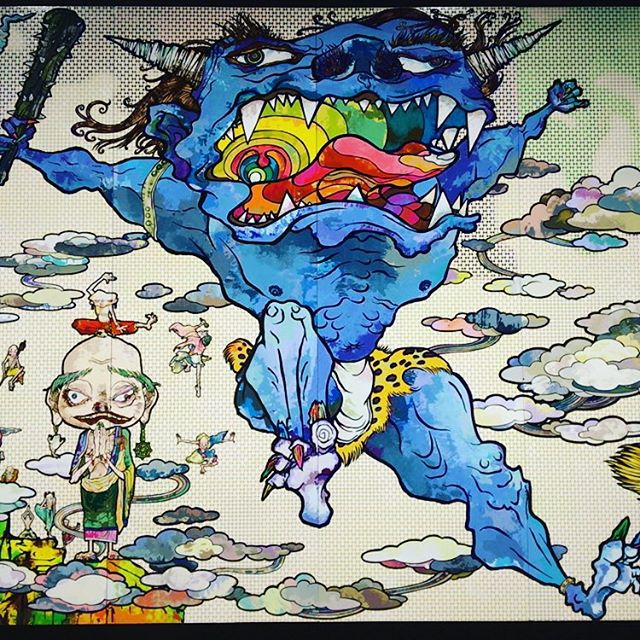|
Takashi Murakami made his reputation primarily outside of Japan with an idiosyncratic style combining elements of traditional and modern Japanese culture in a burst of high energy high gloss `superflat` paintings in which manufactured motifs in the guise of smiling flowers, mushrooms and his own pop icon `Mr Dob` jostle for position on crowded canvases. The work is heavily influenced by manga, anime and its associated `otaku` subculture. Murakami struggled for recognition in Japan partly through his irreverent criticism of the backward-leaning conservatism of the art establishment there. Over the last decade - working mostly overseas - his output and fame have grown exponentially, with major installations and events in such august surroundings as the Palais de Versailles, the Rockefeller Center and the Bilbao Guggenheim Museum. His work has expanded beyong painting and screen prints into large-scale sculptures reminiscent of Jeff Koons and into the whole panoply of commercial merchandising. This spectacular exhibition in the Mori Art Museum on the 53rd floor of the Roppongi Hills Tower in Tokyo is his first in Japan for fourteen years and tellingly chooses a theme inspired by one of Japan`s great recent traumas - the earthquake and tsunami of 3.11. I do not share the Japanese love of what might be termed `cute-fantasy` and have thus far eschewed the vast majority of Murakami`s work. This show has changed my mind. With examples of his earlier work and informative background on the way in which the 500 Arhats was created it bursts into life with the sheer stonking scale of the thing : at 3 by 100 metres and resplendent in its glossy psychedelic colours (acrylic paint, platinum and gold leaf on top of screen prints on canvas mounted on aluminium frames) it assaults the eyes and demands attention. This work was created just after the Great East Japan Earthquake in March 2011. Murakami wanted to do something to thank Qatar who were swift to provide aid. The trauma felt by all had inspired an outpouring of artistic energy and Murakami wanted to do something significant, something on a massive scale. Arhats are people who have achieved nirvana or spiritual enlightenment and are able to banish evil spirits and Murakami drew heavily on ancient buddhist texts and images to create the figures. In order to bring his vision to reality he invited art students from around the country to join his collective and over 200 did so, working collaboratively in his industrial-scale warehouse-atelier-studio outside of Tokyo. This film has more background on the creation http://www.highsnobiety.com/2015/10/01/pharrell-visits-takashi-murakami-studio/ The colours reminded me of the vibrancy and reflective impact of stained glass in a Gothic cathedral. It is perhaps no surprise given the original subject matter and the scale of the work that comparisons have been made to Picasso`s Guernica.
The exhibition has lots of other work including his `Mr Dob` and several pieces in which skulls predominate. Mortality meets Buddhism meets Anime meets Superflat. If you get the chance, visit now while the show is still on. I went on a Tuesday and the place was unexpectedly quiet. Nice!
0 Comments
Leave a Reply. |
AuthorSimon Dalby Archives
December 2023
Categories |





 RSS Feed
RSS Feed